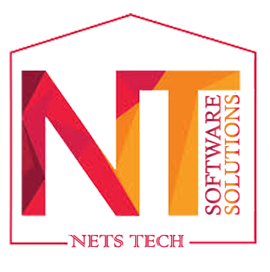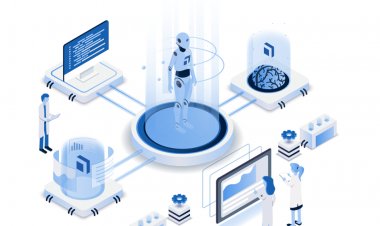Automation
Automation means that the application or technology produces the most with fewer human resources. We can produce more in less time by using automation. Intelligent Automation simplifies man's life in a variety of industries, including manufacturing, packing, shipping, customer service, banking, healthcare, and agriculture.

Introduction:
The age of automation arrives. Automation means that the application or technology produces the most with less human resources and less personnel. We can produce more in less time by using automation. Automation simplifies man's life in a variety of industries, including manufacturing, packing, shipping, customer service, banking, healthcare, and agriculture.
What is the meaning of automation?
Automation refers to the development and implementation of technology in such a manner that we can get the most out of the least amount of human input, or labor. The efficiency, reliability, and speed with which activities are completed will improve as a result of the use of various technologies and approaches with processes.
What is the purpose of automation?
Automation can let you sustain your technique in-house, improve process control, and drastically reduce lead times associated with outsourcing or moving overseas. Automation solutions are tailored to your specific needs and goals, and they rapidly pay for themselves through lower operating costs, shorter lead times, higher productivity, and other benefits.[1]
How many types of automation?
- Fixed automation
- Programmable automation
- Flexible automation
What is fixed automation?
The sequence of processing and operations is established in the system set up in fixed automation. The integration and coordination of several similar activities into a single piece of equipment complicates the system. The following are typical characteristics of fixed automation:
- A substantial initial investment in custom-engineered equipment;
- High output rates
- They are somewhat strict in terms of accommodating products.[2]
What is Programmable automation?
To accommodate diverse product designs, equipment is developed with the capacity to modify the order of activities. A program is defined as a set of instructions that have been programmed such that the system can read and understand them in order to control an operation sequence. New programs can be developed and entered into the machine to generate the new product. Some of the characteristics of programmable automation include:
- Significant investment in general-purpose equipment;
- Poor output rates compared to fixed automation
- Flexibility in dealing with changes in product configuration
- Best suited to batch manufacturing[2]
What is flexible automation?
A flexible automated system is one that is sufficiently intelligent that it can generate a wide range of items with little to no downtime for product changes. There is no downtime when reprogramming the system and changing the physical configuration (tooling, fixtures, and machine settings). As a result, instead of requiring distinct batches, the system may create a variety of product combinations and schedules. The following are some of the characteristics of flexible automation:
- A considerable risk for a custom-engineered system.
- Constant generation of varied product mixes.
- Production rates are moderate.
- Flexibility in dealing with changes in product design.
The following characteristics distinguish flexible automation from programmable automation:
- The capacity to alter sections of programs with minimal downtime in production.
- The ability to switch the physical configuration again with no downtime in production.[2]
What are the advantages of automation?
- Improved working conditions
Automation can minimize health and security risks, eliminate manual management, and reduce risk.
- Enhanced competitiveness, sales, and profit
As your production development becomes more programmed, human error is decreased, product quality becomes more consistent, and cost per component decreases owing to faster production rates and a reduction in the resources required for manufacturing the items.
- There is no labor problem
In the UK, many industries are struggling to locate manufacturing workers, particularly for heavy manual labor. Automation has the potential to reduce the requirement for employees to do these sorts of operations.
- Increase your manufacturing capacity
Automation increases your production capacity since equipment may be set to run unattended 24 hours a day, seven days a week.
- Consistency in compliance
Manufacturing quality is intrinsically more dependable and accurate with automated engineering.
- Factory productivity has increased
Your process becomes more streamlined and efficient as a result of lower operating costs, faster production rates, and higher quality output, as well as all of the benefits of automation mentioned above. This has a significant impact on your factory's output.
What are the disadvantages of Automation?
- Investing capital
Automation may also necessitate a significant investment. As a result, before making a decision, we propose taking into account both the required investment and the expected ROI.
- Get rid of jobs.
It is true that with the arrival of automation, certain occupations may be eliminated. Instead of doing mind-numbing, tedious, or unpleasant duties, employees might be taught to work in other areas of your company.
- Automation. 8 June 2021; Available from: https://www.techopedia.com/definition/32099/automation.
- TYPES OF AUTOMATION - PRODUCTION AND OPERATIONS MANAGEMENT. Available from: https://www.wisdomjobs.com/e-university/production-and-operations-management-tutorial-295/types-of-automation-9679.html.

 admin
admin 
























